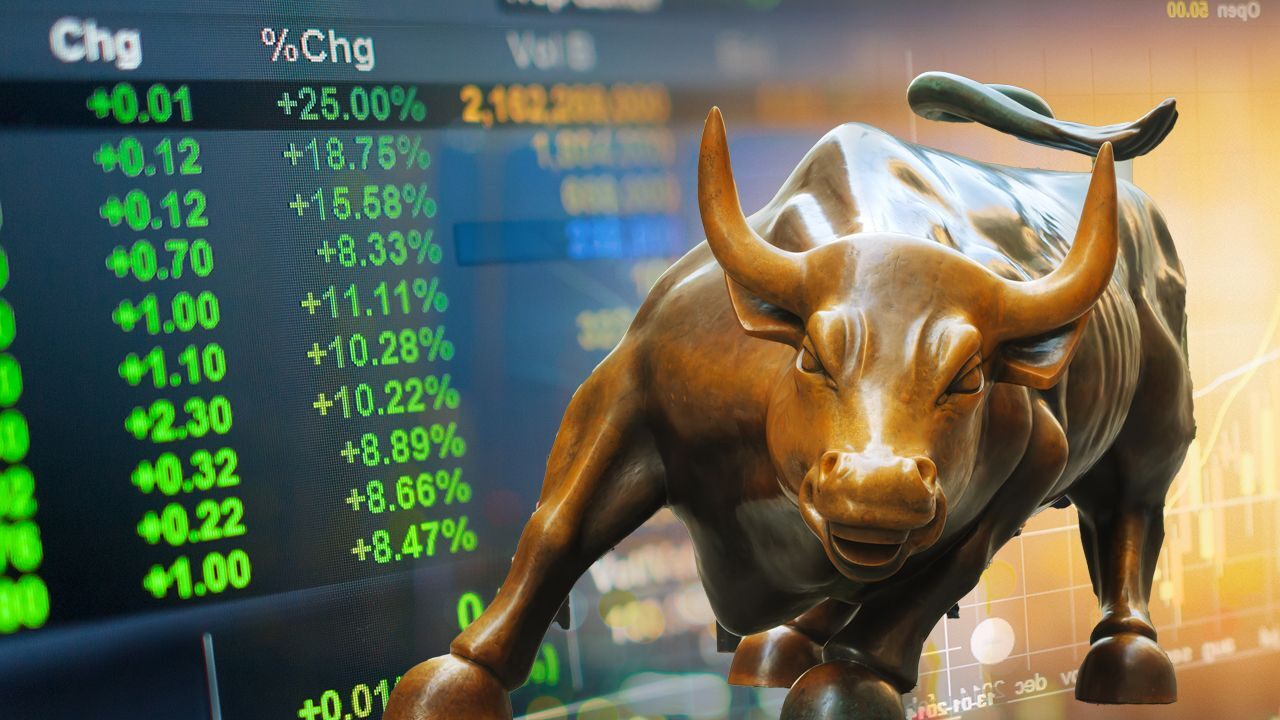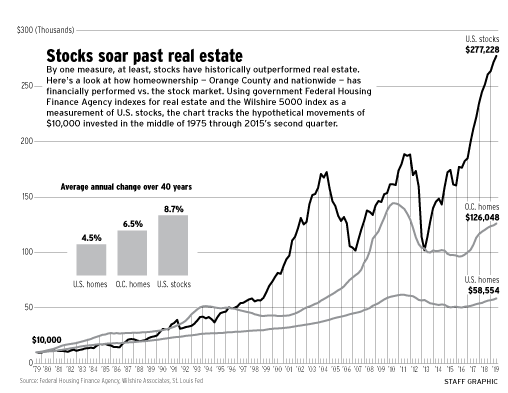A bull market is a period of rising asset or security prices in financial markets. A bull market is an extended period of rising stock or other asset prices. Generally speaking, a bull market can be described as a period of rising stock prices.
Typically, a bull market marks a 20% rise in stock prices, followed by a previous 20% fall, and then another 20% fall. While there is no hard and fast rule for defining a bull market, a market is generally considered bullish when stock prices rise 20% or more after a 20% decline and before the next 20% decline. Since stock prices are constantly rising and falling during trading, the term “bull market” is usually used for extended periods when the majority of stock prices rise.
A bull market is most commonly used to refer to the stock market, but other asset classes can also have a bull market, such as real estate, commodities, or foreign exchange. This is the opposite of a bear market, which is commonly known as a period when the major indices drop 20% or more from their recent highs and stay that low for at least two months. A bull market usually occurs when major stock indices such as the S&P 500 stock index and the Dow Jones Industrial Average (or “Dow”, which includes the top 30 U.S. stocks) rise by at least 20 times 100 and continue to rise.
You may be wondering what to invest in during a bull market. In this article, you’ll learn the characteristics of a bull market and answers to common questions that investors ask. This is the time when stocks are likely to appreciate in value and you can profit from that increase. Here are some of the main reasons why you should consider investing during a bull market. Investing in the stock market during a bull market is not for the faint of heart.
Investing in a bull market
While many investors believe that buying and holding assets for a long period of time during a bull market will result in strong returns, this is not always the case. In order to maximize your investment returns during a bull market, it is wise to diversify your portfolio and select high-quality investments. This is especially true for small-cap stocks. In addition to diversifying your portfolio, you should also consider investing in companies that have high growth potential.
During a bull market, the market is typically characterized by increasing profits, lowering unemployment, and visible economic growth. The name is derived from the way that bulls attack in upward motion. During a bull market, stock prices will increase, resulting in increased profits. The market is usually a good time to invest, but be cautious and wait until the next bull market phase to invest in stocks.
Bull markets present an opportunity for investors to step up their investing game. This increased optimism for future growth encourages investors to invest more risk. This can lead to large losses, but investing in stocks before a market dip is still wise. While it is tempting to buy stocks at a high price, investors should be cautious and seek advice from a financial advisor. This strategy is most successful if investors are able to diversify their portfolio and buy securities before the market drops.
Another strategy is to buy stocks that sell directly to consumers. Direct-to-consumer companies have proven their viability and can be a safe haven during a downturn. Large-cap mutual funds may contain some direct-to-consumer stocks. A bull market ends when external factors negatively impact investor confidence or when the market looks overpriced. While a bull market may last for many years, it often ends when the market is weakened or when investor confidence declines.
Stocks often reach all-time highs during bull markets. In March of 2020, the stock market experienced a 33-day bear market, falling nearly 40%. However, investors suddenly became interested in purchasing stocks at a discounted price. This led to a boom in the real estate industry. With this positive market environment, it is possible to take advantage of great opportunities and make money in real estate. You can make big investments during a bull market.
Characteristics of a bull market
A bull market occurs when prices in a given stock or currency increase over a long period of time. These indexes tend to rise more frequently than in bear markets, but the characteristics of a bull market are different for both. When prices increase more than 20% from their 52-week low, it is considered to be in a bull market. During a bull market, investors’ confidence and economic conditions are favorable, causing them to purchase more shares of stock and other assets.
The term bull market can apply to both stocks and other types of assets, such as real estate or commodities. It is important to understand that just because all asset classes are experiencing the same phase, they do not necessarily go through it. Some asset classes will outperform others, such as real estate or commodity prices. But regardless of the phase of the market, a bull market is generally associated with a favorable economic climate.
A bull market occurs when the economy is strong or is already strong. It will often coincide with a drop in unemployment or a rise in corporate profits. Investor sentiment will also be positive, and the overall tone and demand for stocks will increase. A bull market can provide huge profits for investors, so be sure to take advantage of it! So, how do you tell if a bull market is in the works? By following the traits of a bull market, you can predict its direction.
A bull market is a period where investors buy and hold for months or years. It can help people make profit from short-term trading, and it may even enable previously undervalued sectors to recover. It is also a time when economic growth is likely to happen. By following these guidelines, you can protect yourself from investing based on emotion. Emotions are powerful forces that can lead to irrational and risky decisions.
A bear market occurs when an economy is weak. A bear market happens when the economy is weaker and this affects the entire economy. During a bull market, the economy becomes stronger and more stable, which in turn improves profits and purchasing power. The higher prices indicate increased liquidity. During a bear market, investors are discouraged from investing, while higher prices are an indicator of confidence. When the economy is strong, more people will invest and more funds will flow into the market.
Common questions investors ask about bull markets
One of the most common questions investors ask is “why don’t bull markets last forever?” While many of us hope for a long and prosperous market, you need to remember that the market will always have a down period. Bull markets end when external forces affect investor confidence or when stocks are overpriced. You can avoid this pitfall by following a few tips. Below are three of the most common questions investors ask about bull markets:
What are the characteristics of bull markets? Bull markets are characterized by exuberance, confidence, and credulity, and an investor’s willingness to pay higher prices for assets. Although some have argued that bull markets have been excessive in retrospect, history has proven that moderation is key. Bull markets are often preceded by a new product or service that investors perceive as revolutionary. As a result, it’s important to understand the psychology behind the phenomenon and understand when one should sell.
A bull market begins with many companies rallying with the market, but as it continues to grow, it rewards only a handful of companies. A bull market is a process of moving away from stocks that are deemed too risky and toward those that are more valuable. While the initial period of a bull market is characterized by risk tolerance and low levels of concern, this psychological state will end when prices reach unsustainable levels.
A bull market is characterized by an extended period of rising prices, which usually happens during the expansion phase of a business cycle. When prices increase, investors are confident and the economy is strong. However, timing a bull market is extremely difficult. That’s why most investors should stick with a long-term strategy. However, there are some exceptions to this rule. For example, a stock price may fall more than 20% in one month, but that’s unlikely to happen during the next year.
Duration of a bull market
In the past, investors have debated whether the duration of a bull market affects its performance. Some financial analysts have suggested that it does, but many have argued that it is not a reliable way to predict the future. However, there are several other factors that affect market performance, including economic and demographic conditions. These factors can provide important clues as to the health of the market. In this article, we’ll look at some of the most common indicators of market health and the duration of a bull market.
A bull market is a time period when stock prices have risen in price. Prices typically increase in this period, and it is usually accompanied by positive economic indicators, such as low unemployment. The bull market can last months or even years, depending on the nature of the market. One of the longest-lasting bull markets lasted eleven years, starting after the 2008 global financial crisis. It was characterized by several factors, including increasing investor confidence, improving economic conditions, and a generally positive tone.
While bull markets don’t live forever, they do not age gracefully. Historically, the S&P 500 has enjoyed a bull market that lasted anywhere from four to 11 years. Bull markets have been followed by large gains in the first year. Since the collapse of Covid in March 2020, the large-cap stock index in the U.S. has seen the biggest first-year gain since 1945. That means that a bull market may last for much longer than investors had originally anticipated.
The length of a bull market can be a useful indicator of the health of an economy. The longest bull markets were accompanied by speculative bubbles. For example, the Dot-com bubble popped in 2000, while the Great Crash of 1929 was accompanied by a speculative bubble in the 1920s. And the third-longest bull market lasted for nearly a decade, culminating in the 2007 Global Financial Crisis.
Join The Professional Stock Investing (PSI)™
Learn How to Develop a Million Dollar Stock Portfolio
On the Professional Stock Investing, you will learn:
- Invest in Winning Stocks That Generate High Double-Digit Returns
- Identify Market Uptrends and Downtrends Accurately
- Hedge and Protect Your Portfolio from Market Crashes
- Manage Your Risks and Maximize Your Returns
- Develop the Psychology of a Disciplined Investor
- Build a Winning Portfolio That Suits Your Investment Goals
Helpful Links:
Homepage
About
Contact
Personal Development Partner





